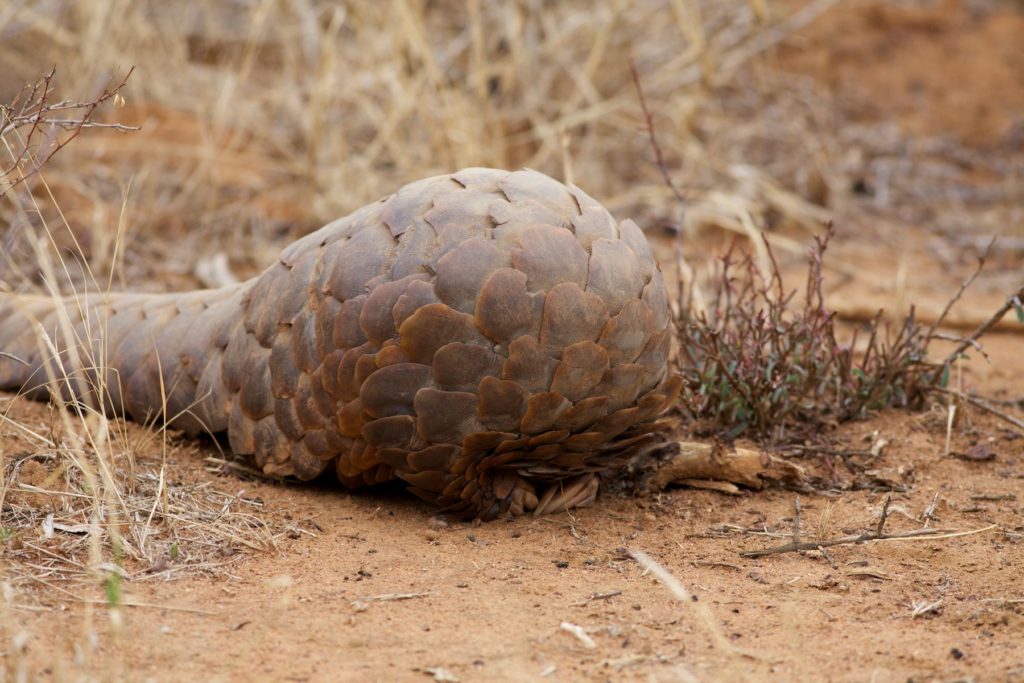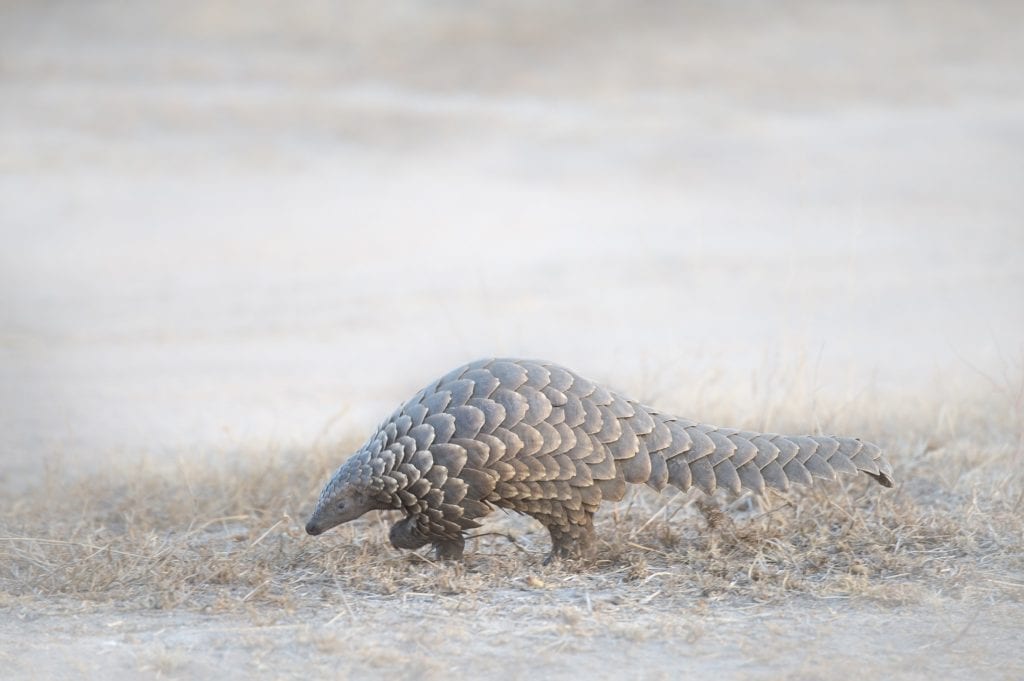It’s hard to describe a pangolin in animal terms. This bizarre mammal is the only warm-blooded creature on the planet that is completely covered in scales. And its peculiarities do not end there.
Scale model
The ground pangolin, also known as the Cape or common pangolin, is the most widespread of Africa’s four pangolin species, and the only one found in the eastern and southern parts of the continent. Its broad range, however, does not make it any easier to see. Indeed the elusiveness of this animal is legendary in African safari circles; even game rangers can spend a lifetime in the bush and never set eyes on one.
A pangolin’s scales, like our fingernails, are made of keratin. They form a suit of armour that completely covers the animal’s upperparts and accounts for nearly 20% of its total weight. A threatened pangolin curls up to protect its vulnerable belly, wrapping its tail tightly over its head to form a virtually impregnable ball.

And this strategy is not only a passive one: while curled up it will scythe its tail back and forth, using the blade-like edges of the scales to slice viciously into any unwelcome paw or muzzle. It will even dowse an assailant, skunk-style, with a foul-smelling spray from its anal glands. With a pangolin, you know when you’re not welcome.
Uncurled, a pangolin looks more reptile than mammal. At one end is a long, broad, almost crocodile-like tail. At the other is a tiny pointed head. Each front leg bears three formidable, curved claws, which are held curled up to make walking easier. In fact, pangolins often walk on their back legs only, holding their front legs off the ground and using the tail as a counter-balance.
Ant extraction
If you’re familiar with the giant anteater or aardvark, you’ll have guessed what those claws are for. Pangolins eat ants and, just like the other devotees of this special diet, they have special gear for the job.
Indeed, their daily routine is very similar to an aardvark’s: they are solitary, nocturnal foragers that hole up in a burrow or thicket by day, then emerge at night to sniff out ant and termite mounds with their powerful sense of smell. Once the prize is located, they use those claws to hack their way in and a long, sticky tongue to extract the goodies.
A pangolin’s tongue, like that of a giant anteater, is not attached to the hyoid bone but rooted deep in its thorax, down towards the sternum. This flickering ribbon can measure 50cm in length and is coated in sticky spittle, produced from an enlarged salivary gland. Pangolins have no teeth so can’t chew their food. Instead, a gizzard-like muscular adaptation allows them to grind it down in the stomach, aided by the grit and small stones that they ingest while feeding.
A female ground pangolin gives birth in a burrow – either one she has dug herself, or the old residence of an aardvark or warthog. Her single youngster, weighing just 200–300g, emerges after a gestation of 120–150 days. It stays underground for the first three or four weeks then begins to accompany her on excursions above ground, hitching a ride on the base of her tail.
A common plan
Pangolins belong to a unique order (Pholotida) that is confined to Africa and Asia. They are entirely unrelated to the armadillos and anteaters of the New World, with which they are often confused. The fact that these groups have so many unusual traits in common – the body armour, extensible tongue, digging claws and lack of teeth – is down to convergent evolution.
The adaptations that each has evolved separately for a lifestyle based on eating ants have ‘converged’, through natural selection, towards a common form. What works on one continent, it seems, works just as well on another.

Ground pangolins inhabit savanna and woodland habitats, preferably with sandy soil. They are vulnerable to bush fires, and occasionally fall prey to predators such as hyenas and leopards. A more serious threat, however, comes from people, who have long ascribed mystical properties to pangolins.
In parts of Africa these animals are sacrificed for rain-making ceremonies and their scales used in charms to ward off witchcraft. Today there is a thriving market for pangolins in China and the Far East – both as food, and for the medicinal products derived from their scales, which are thought to help with everything from blood circulation to fertility.
At a glance
Length: head and body 34–61cm; tail 31–50cm
Weight: 7–18kg
Food: ants, termites, other insect larvae
Reproduction: one young, born after gestation of 120–150 days
Habitat: lowland woodland and savanna
Distribution: southern and eastern Africa, from Lake Chad to northern South Africa
Status: Vulnerable